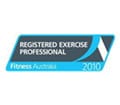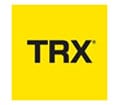Here is some office exercises that will improve your health with
- Improve work performance
- Increased energy
- Better posture
- Greater mobility
- Less aches and pains
Office Exercises video here
Other related office exercises articles
https://www.corehealthcoaching.com.au/ever-heard-of-sitting-disease/
Here is a transcript of this office exercises video
Sally: Here we are in an office. Don’t we all wish we had an office like this? Just outdoors, the breeze.
Cameron: This a PT office.
Sally: Natural air-conditioning, yes. Okay, so I’m sitting here at my desk, on my chair and we’re going to do some office mobility works, some office exercises.
Office Exercises 1
Cameron : Yeah, definitely. What happens to those that are actually in an office on a regular basis, generally we’re sitting down for a least a minimum of 6 to 8 hours a day. What that does with a lot of their muscles is it tightens up, because we’re not moving. Our body is designed to move and we’re building up tensions in certain muscles, calves, quads, lower back, chest muscles. From our terminology point of view, we talk about bringing your body into flexion.
Flexion is keyboard in front of you, so what’s happening is then we’re spending a lot of time rolling our shoulders in. We’re hunching forward. We have our phone through here. Basically we’re going back into a fetal position. What we want to do is counteract that by doing some stretches. How we can do it from a sitting position in your office chair if you don’t want to make a big fuss at work is just stretching your arms up. This is now bringing your body into extension.
It’s opening up through the chest here so you’re getting better quality oxygen through to your lungs. We’re really opening this chest cavity through there. You can see the arms sort of coming beyond that complete vertical position and opening up through your chest. That’s what we call an extension. If you look at it from my point of view the spine is going backwards as opposed to coming into this forward position that we do on our computer desk.
Sally: If feels good too. You know it does.
Cameron: Look it’s great about getting that stretch through. We’re going to take that just one step further. As I said, one of the muscles get fairly tight through here is through your chest. I’ll just get you to put your hands then behind your head. Interlock your fingers and what we’re going to do is then open up your elbows and try and pull them back as far as you can. Again, this is stretching in through here, through your upper chest muscles.
Sally: Yep.
Cameron: You may have seen people to stretches like this where they’re pulling it back. If you’re in an office environment this is just a normal stretch. You will see people doing this instinctively, but from a bio mechanical point of view our bodies actually need it after 6 hours of sitting down in this hunched position. That’s the first one, so you can relax there. That’s getting the upper body through there.
Now, the spine itself is designed to move in 3 ways. We’ve got this flexion point of view then extension. The other part is we get some twisting action happening through there as well. Again, if you’re sitting in a chair that’s got arm rests, it’s locking your whole body in. You’re not getting much of an opportunity to do some twisting sort of action.
Office Exercises 2
We are going to do a little bit of twisting. You can do this in your chair still, so you don’t have to move from your cubicle or from your office environment putting your hands out directly in front. Yep, that’s it you’re James Bond just there, okay? We’re taking it to the side, and knowing Sally, she’ll hit me in the head again. Just taking it as far as you can without putting too much strain through your lower back, and then, going to the opposite way.
A really good technique with this is just seeing how far your body can actually twist. For some people who’ve been in an office environment for a long period of time, if they get to here they are doing pretty well. Okay? Going past that 90 degrees is even better, but when we’re feeling the pain, you shouldn’t be feeling pain more than 6 or a 7. Okay?
Sally: Out of 10.
Cameron: If you’re getting like an 8 or a 9, that’s when you’re going to put a little bit of strain on it. This all about repetition. That’s the other part of our spine, we said moving into flexion and extension, the next one is twisting.
Office Exercises 3
The next one we call the side flexion. With side flexion what we’re doing is going from side to side. In a chair environment you might just have to move a little bit forward if you’ve got armrests, but all we’re doing is coming down from to side. Again, it’s not a difficult exercise. It’s just making sure that our spine is mobilizing. It’s moving and is not getting tight, and it’s counteracting the things that we’re doing by sitting in the chair for such long periods. With this one, some people will start lifting their shoulders up. It’s more about their opposing hand coming down. Again, just a word of caution, don’t try and strain this, going oh, I can touch the ground. It’s just something to get the spine moving. You can see there, it’s not that complicated.
From there we can see we’ve actually got our spine mobilized. We’re moving in 3 different directions that it was designed for. We’ve opened up and put our body into a really large extension and getting a lot of stretches through there. The next one is actually getting a little bit of blood flow into our legs.
What we’re going to do from that, this does actually involve you standing up, okay? We’re going to do some office squats.
Sally: Okay.
Office Exercises 4
Cameron: Just standing up and sitting back down and do it again. We can get really technical as far as the knee position over the feet, but to be honest this is just about getting some blood flow into the legs. That’s all we want to do. Now, if you’re in an office environment and you don’t want to be seen you can quickly do 3 or 4 of these. Again, it gets the blood flowing there, rather than have the blood flow in the upper part of the body it’s not getting into the lower half.
Sally: Look, if you don’t want anyone to see, go into the toilet and do squats up and down the toilet. No, I read some actor said he was really pushed for time, so he said he didn’t have time to train, so he ended up doing squats in the toilet in the airplane. If you want to exercise you will find a way. I can’t remember who it was. Some fit guy, I was thinking like oh, wow. If you want to exercise you will find a way. Nothing will stop you.
Cameron: Look, I completely agree. With that I just need to know is he multitasking is he doing 2 things on the toilet at the same time?
Sally: It’s why airplane toilets are so revolting probably.
Cameron: Yes, again all we’re doing is getting blood flow into the legs.
Sally: That’s really funny you brought up your track. That’s fun.
Cameron: It has done, but it works. It is just, wow.
Sally: What of the great ironies I find is that you go to a conference or what not now, and everyone goes okay, we’ll stand up to take a break. Years ago, you used to sit down to take a break, you know what I mean?
Cameron: Yeah.
Sally: Now, people stand up to take a break. It’s just the world has turned upside down, so yeah.
Cameron: Look even to take that one step further we sit about 6 to 7 hours in an office environment. We then drive a car to and from work sitting down. We then go to the gym and sit down.
Editor: You can find other office exercises related articles on this “Sitting Disease”. https://www.corehealthcoaching.com.au/ever-heard-of-sitting-disease/
Sally: Any exercise you do standing up is better than an exercise you do sitting down.
Cameron: Then, when we recover from our exercise program we go down and watch TV sitting down. We spend more time sitting down than anything else. That’s why just getting up and moving, getting the spine to move is just so beneficial.
Office Exercise 5
The last one I want to show with this, again if we’re going up and down, is very similar to the first exercise that we’re over the back of the chair. Now, leaning over the back of the chair is really leaning back. Again, don’t want to put too much pressure through the lower back. Should feel still comfortable, but a little bit strained, but not too much. That was the next one there. Definitely supporting your lower back where actually putting your hands just below your bottom through that lower back and really getting a great extension.
This generally speaking, is a fairly advanced sort of movement pattern and really getting that excessive stretch through there, but it’s always about how far the range is comfortable with you. Sally, we might just get you to do…
Sally: Did I tell you I’ve taken up yoga?
Cameron: I can tell now, I tell you. Definitely as we come back it’s what’s right for your range and not pushing through there too much. This will give you a lot more leverage around extending the back, which is the opposite of this positions through here.
Sally: Again, this is a fairly natural movement. You will see people stretch like this because it feels better, yeah, yeah, yeah.
Cameron: Look it’s not until we consciously have to think about doing that because we’re subconsciously doing so much other stuff around sitting down. Yeah, it would come naturally to most people, but sometimes that’s not natural.
Sally: One really useful tip if you’re working in an office environment all day is to actually set an alarm on your phone to go off every hour and to get up, stretch around, just get up and walk around. Do something so you’re not just sitting there for hours on end.
Cameron: That’s great advice. We come from sort of the same philosophy. Every hour is really good, and you think about on the hour. To me, what I do from a calendar point of view if you’re using Outlook or something, run a note like a little popup screen. For me it’s about movement, go grab some water if it’s not on your desk, every couple of hours obviously then, you can schedule in having a little bit of food, going to the toilet as well. It’s just that movement, and to break it.
Now, a lot of scientific research has supported that our attention spans really only go 45 to 50 minutes, so breaking it up every hour, means when you come back that you’re more refreshed. You’ll get more done in that next 20 minutes than you would have got done in that 3 or 4 minutes that you just missed out by moving, getting a drink of water, having a little bit of something to eat and getting the movement that your body actually needs. Definitely that hour, I love that as a technique.
Office Exercises 6
Sally: Actually, one of my clients, what she does is she works in a high-rise office thing, so she has a little hour thing. I mean obviously at work it doesn’t happen. You’re on the phone, you’re in a conference call. It won’t happen, but when the alarm goes off on her phone she gets up. She walks the stairs. She walks the flight of stairs and then, she comes back to her office. She’s done essentially nothing but walked the stairs, and you know just feels so much better.
Cameron: Yeah, and again, that’s getting blood flow back into the body. Same concept in regards doing just some squats on your chair.
Sally: That’s right Cameron.
Cameron: Perfect.
Sally: That’s great. Thank you.
Cameron: Yeah, no problem. Thanks Sally.
Other related office exercises articles
https://www.corehealthcoaching.com.au/ever-heard-of-sitting-disease/














[…] muscles. This includes your quads, hip flexors, lower back, chest and upper neck. Here are some office based mobility and stretching exercises that you can do in your […]